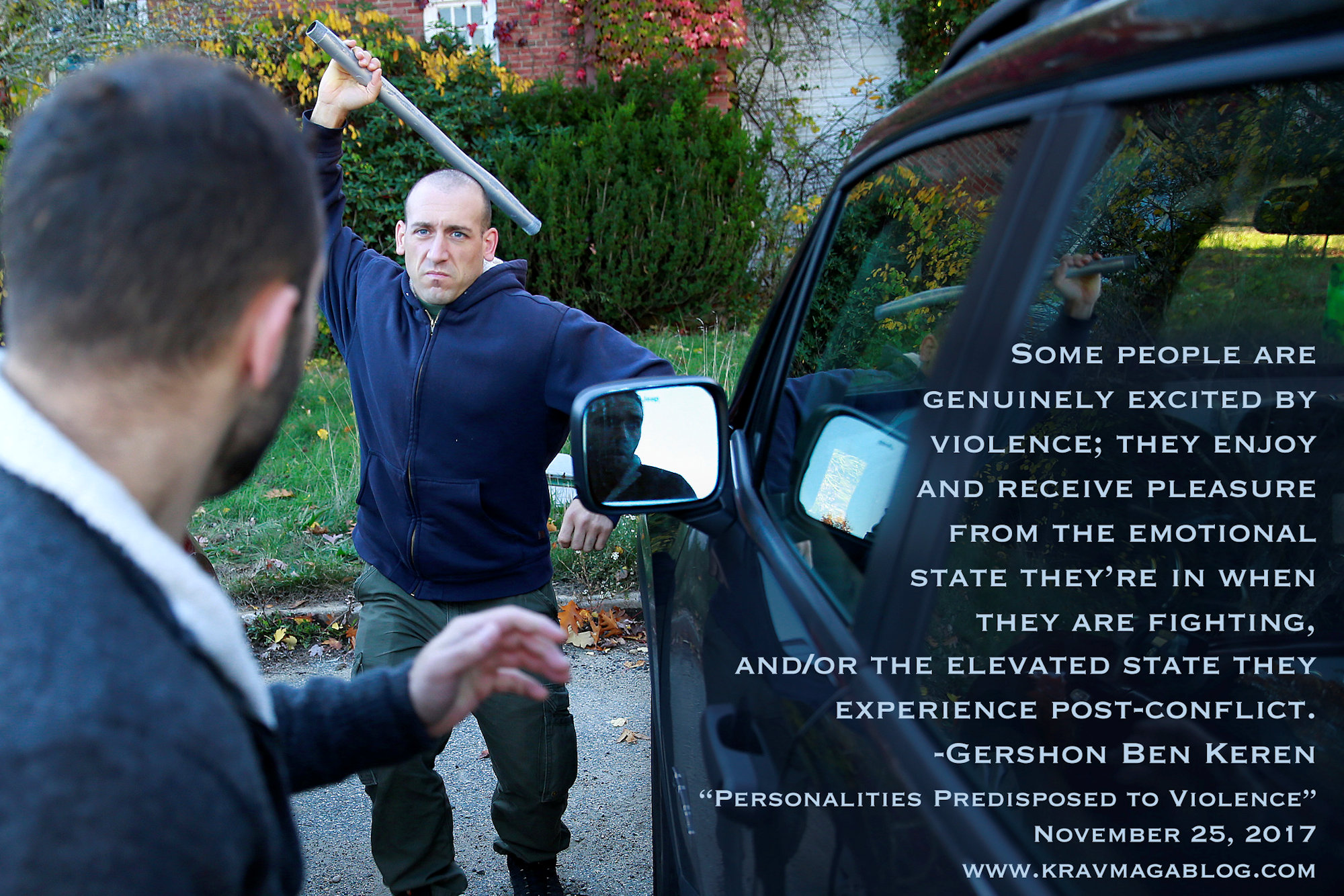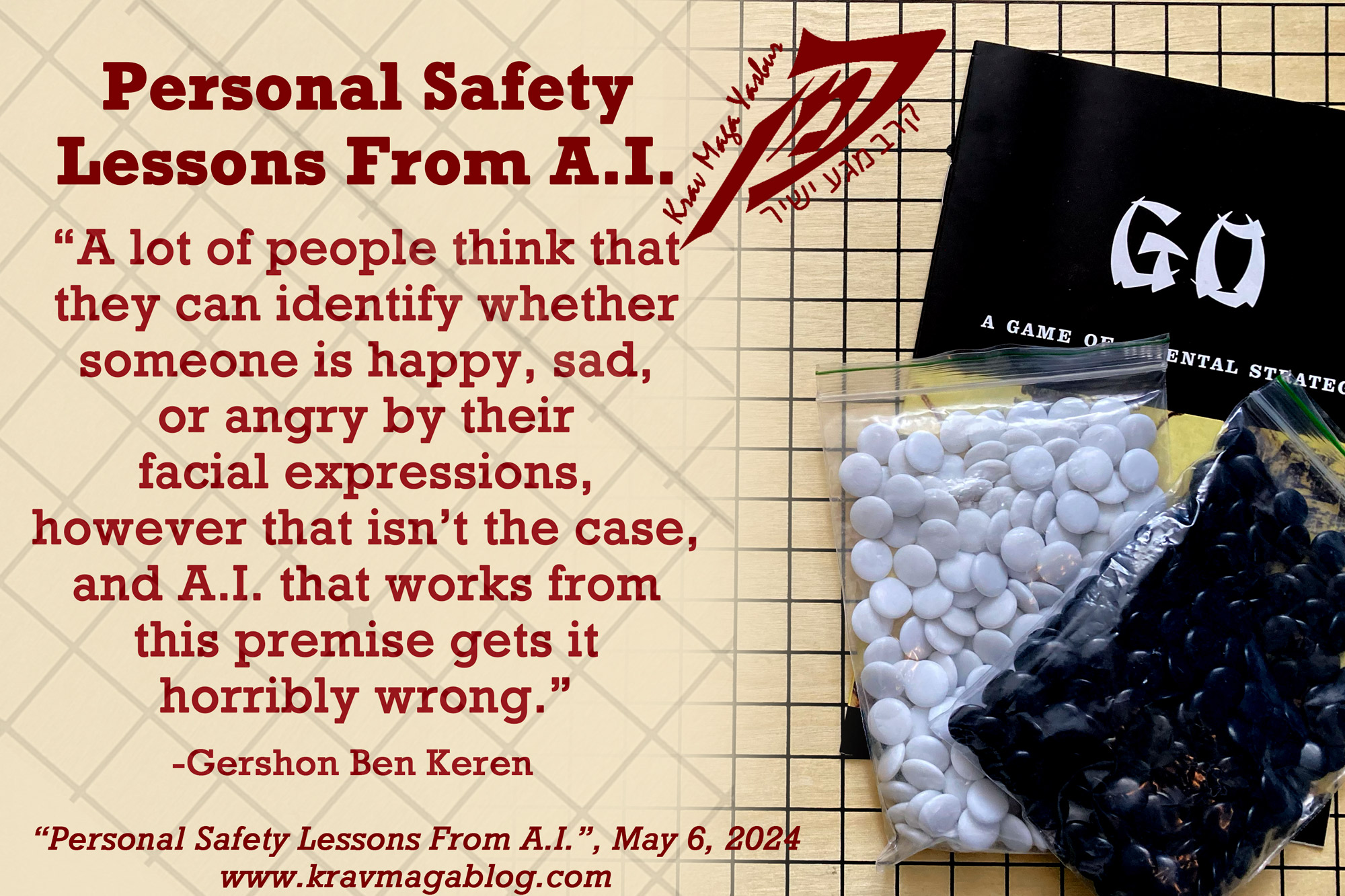Some Lessons From The Terrorism Awareness Course, is an article written by Gershon Ben Keren, a 5th Degree Black Belt in Krav Maga, who teaches Krav Maga in Boston, MA. He has also authored three Amazon best-Selling Books on Krav Maga.
I firmly believe that a good 85 % of all potential violent crimes can be detected and prevented if a person has good situational awareness (SA) – a further 10-12 % can be dealt with using effective de-escalation and disengagement strategies, demonstrating that physical self-defense (armed/unarmed) represents only a small, albeit a very important, piece of the total personal safety/defense package. Having just had David Ashworth conduct a TAC (Terrorism Awareness Course) at the school, I thought I’d write a blog piece, on some of the aspects of personal security that were reinforced to me by his teaching.
One of the biggest enemies to having good Situational Awareness (SA) is routine. We develop routines for two reasons: to make sure every detail in a plan gets executed, and to allow us to not have to think – routines can save us time and ensure that everything gets done. A pilot will follow a checklist to make sure that nothing gets overlooked, that’s their routine, and a person getting up in the morning, will get out of bed, brush their teeth, get dressed, make coffee, eat breakfast, leave the house, get in their car and drive to work etc. The difference between their routine and the pilot’s, is that the pilot’s routine exists to make them think, whereas the other routine consists of habits that allow a person not to think. We all have these routines.
If you take the same route to work each day, not only does this make you a “predictable” target – should someone be surveying you – but it also switches you off; it allows you to not have to think, which is why you probably do it i.e. you can tune out, listen to the radio, plan your day etc. You go the same way, so you don’t have to think about your journey, and can therefore create some mental bandwidth for yourself, so that you can think about something else. By simply altering your route, you start to think about your personal safety. If you don’t have too many options about the way you go to work, doing something as simple as turning left out of your driveway rather than right, and looping back on yourself at the next junction will be enough to at least get you thinking in the right way; if you stop to consider which way you should turn when you leave your house, you will be taking a moment to consider your personal safety.
Planning. This was perhaps the most interesting part of the course to me. When you start to plan, you start to think, and when you start to revise a plan, you really start to think. One of the examples that Dave used was of changing the tire on a car. Dave’s Dad had distilled this down into an 8 step process for his mother to follow, should she find herself in such a situation. That such a plan has been made and exists, means that the possibility of getting a flat tire is considered i.e. when you accept that the unexpected and the unlikely may occur you will find that there will be no surprise and denial when it does – the early warning signs will be picked up on and recognized.
The fact that Dave tried to distill his father’s plan down to fewer steps, demonstrates two things: 1. He wasn’t following the plan blindly but working with it, and 2. He was trying to simplify things. If you simply go through the motions of following a plan but aren’t really taking in the feedback that it gives, such as a pilot ticking off that they’ve checked the fuel without actually noting the level, or a motorist glancing in their mirror before changing lanes without really looking and considering their environment then the plan, the routine will work against you and put you in danger. Trying to simplify things means that you are not only accepting that there is feedback into a plan, but that it would be a better plan if it contains less steps to follow i.e. it will be more efficient. A streamlined plan is more effective and much more likely to keep the focus on a particular outcome, such as changing a tire. In my experience it is always better to have a greater quantity of smaller, more focused plans, than one larger more comprehensive plan that looks to cover every eventuality e.g. if your plan is designed to solve the problem of a flat tire, then there is no need for it to include checking your oil-level etc. Making a plan as lean as possible will keep you on track to achieving a particular goal. From a personal safety perspective, if your “plan” is to get you from your house to your car safely, convenient as it may be, watering the plants, taking the trash out etc. shouldn’t be included.
For many people personal safety is an afterthought. For those that say they don’t need to really consider training in self-protection and self-defense because they have good common sense, my guess would be that they’ve never really thought about issues of personal safety (they may be in denial), and I would bet my overdraft on the fact that their level of situational awareness is nil.
0 COMMENTS














